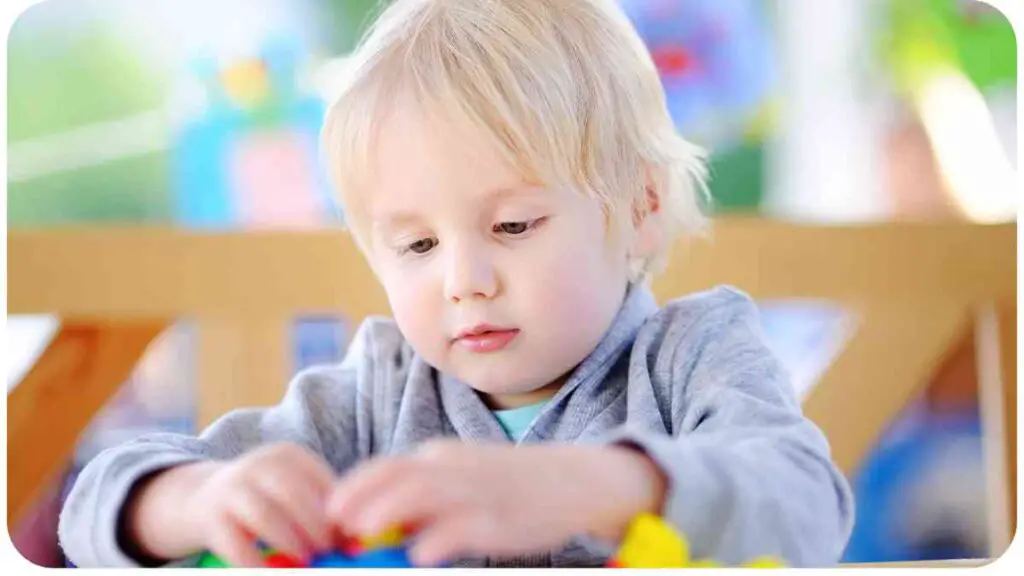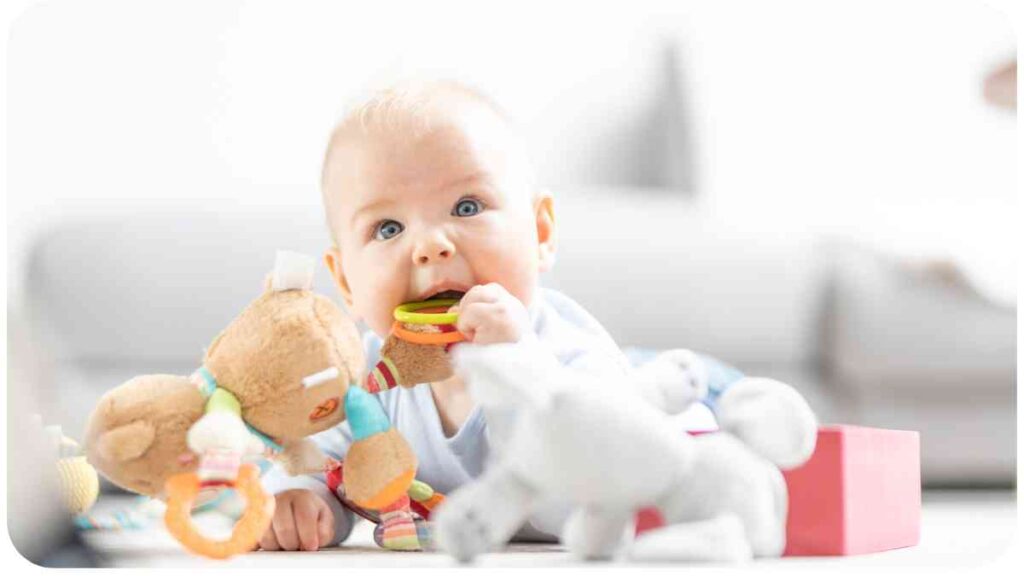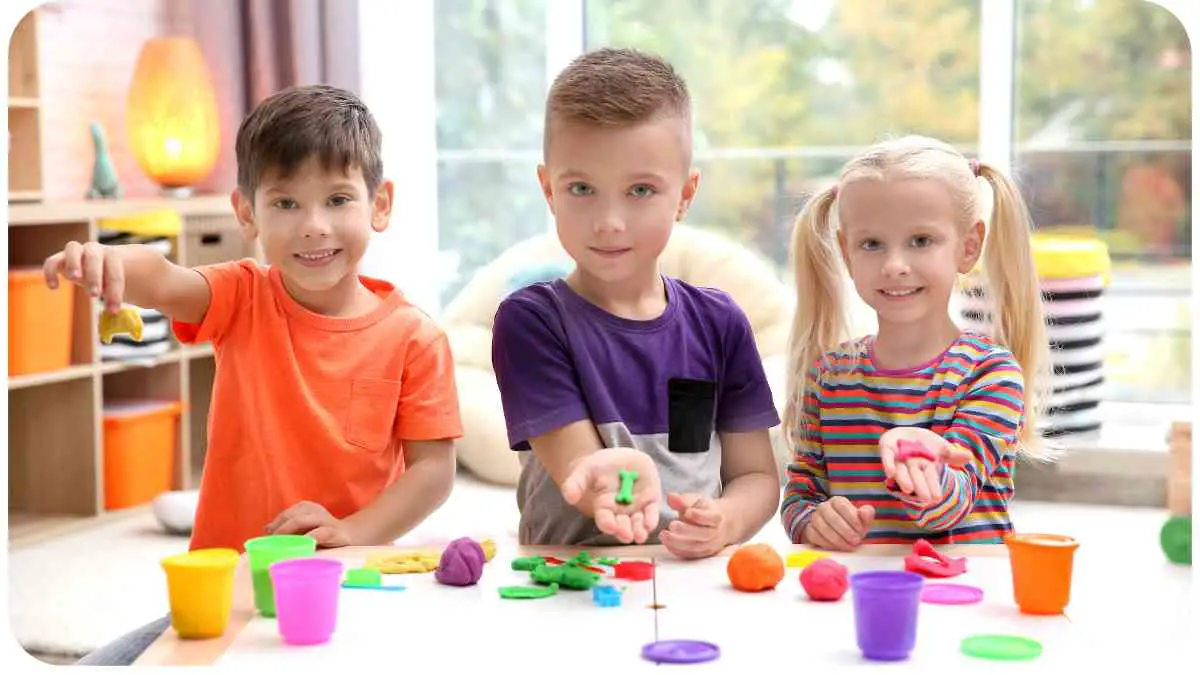Welcome to a world of sensory playdough! If you’re looking for a fun and engaging activity for your child that promotes their cognitive, physical, and emotional development, sensory playdough is the perfect choice.
In this article, we will guide you through the process of making sensory playdough at home, provide you with an easy DIY recipe, and share various tips and ideas to enhance the sensory play experience. Get ready for a hands-on adventure that will unleash your child’s creativity and imagination!
| Takeaways |
| Sensory playdough offers numerous benefits for children, including the development of fine motor skills, hand-eye coordination, and sensory exploration. It also encourages creativity, imagination, and self-expression. |
| Making sensory playdough at home is simple and cost-effective, using common household ingredients. DIY playdough recipes can be customized based on preferences and ensure a safer and more affordable experience. |
| Sensory playdough can be enhanced by using various tools and accessories such as rolling pins, cookie cutters, and molds to encourage creativity and exploration. Introducing themed playdough and add-ins can create a more immersive experience. |
| Tips for a successful sensory playdough experience include setting up a dedicated playdough area, supervising young children, allowing free exploration and experimentation, and properly storing the playdough after use. |
| Troubleshooting common playdough problems, such as dryness or stickiness, can be easily solved by adjusting the ingredients or following specific techniques. Safety precautions, allergen considerations, and age-appropriate activities are essential factors to consider. |
| Sensory playdough can be enjoyed by children of different age groups, and activities can be adapted to their developmental stage. From infants and toddlers to older children, sensory playdough offers engaging opportunities for learning and creativity. |
2. Benefits of Sensory Playdough
Sensory playdough offers numerous benefits to children of all ages. By engaging in playdough activities, children can enhance their fine motor skills, hand-eye coordination, and sensory exploration.
This activity also encourages creativity, imagination, and self-expression. Through sensory playdough, children can develop their cognitive abilities, improve problem-solving skills, and learn about colors, shapes, and textures. Additionally, sensory playdough provides a calming effect and can be a great stress-reliever for children. Let’s dive into the world of sensory playdough and discover these benefits firsthand!
Explore the joy of crafting DIY sensory toys with your kids. Encourage creativity and sensory development through these engaging and affordable homemade projects.
3. Making Sensory Playdough at Home

The beauty of sensory playdough lies in its simplicity and accessibility. You can easily make your own playdough with common household ingredients. Not only does this allow you to customize the playdough based on your child’s preferences, but it also ensures a safer and more affordable experience. Let’s explore a simple DIY playdough recipe that will provide hours of sensory fun.
4. DIY Playdough Recipe
Table: Comparison of DIY Playdough Recipes
| Traditional Playdough | Edible Playdough | Scented Playdough | |
| Difficulty Level | Easy | Easy | Easy |
| Ingredients | Salt, flour, water | Condensed milk, cornstarch | All-purpose flour, salt, cream of tartar, oil |
| Child-Safe | Yes | Yes | Yes |
| Taste | Not edible | Edible | Not edible |
| Scented | No | No | Yes |
Table: Ingredients for DIY Playdough
| Ingredients | Purpose |
| Flour | Provides the base texture of the dough |
| Salt | Enhances the preservation of the playdough |
| Cream of Tartar | Improves the elasticity and texture |
| Oil | Adds softness and helps prevent drying |
| Water | Binds the ingredients together |
| Food Coloring | Adds vibrant colors to the playdough |
| Vanilla extract | Provides a pleasant scent (optional) |
| Glitter | Adds sparkle and enhances visual appeal |
Now that we know the key ingredients, let’s move on to the step-by-step process of making the playdough.
5. Ideas for Sensory Play with Playdough

Sensory playdough opens up a world of creative possibilities. Here are some ideas to help you and your child explore and enjoy the sensory experience:
Unlock the world of imaginative play with easy DIY sensory toys. Discover simple yet effective ways to enhance your child’s sensory experiences using readily available materials.
Table: Playdough Tools and Accessories
| Tools and Accessories | Description |
| Rolling Pin | Perfect for flattening and shaping the playdough |
| Cookie Cutters | Add variety with different shapes and encourage imaginative designs |
| Plastic Knives | Great for cutting, slicing, and creating patterns or textures |
| Molds | Create intricate designs and shapes using various themed molds |
| Spatulas | Aid in mixing and manipulating the playdough |
| Natural Materials | Introduce natural materials like leaves, flowers, or twigs for texture and sensory exploration |
| Playdough Extruder | Enhance creativity by extruding playdough into different shapes |
Remember, the possibilities are endless, and you can always incorporate new tools and materials based on your child’s unique interests and imagination.
6. Sensory Playdough Themes
To make sensory playdough even more exciting, you can add themes and incorporate various sensory elements. Here are some ideas to get you started:
Table: Sensory Playdough Themes and Add-ins
| Themes | Add-ins |
| Ocean | Shells, seaweed, ocean animal figurines |
| Garden | Flower petals, leaves, small gardening tools |
| Space | Glitter, star-shaped sequins, astronaut figurines |
| Dinosaur | Fossil imprints, dinosaur toy figurines |
| Food | Plastic fruits, vegetables, utensils for pretend cooking |
Choose a theme that resonates with your child’s interests and gather the appropriate add-ins. Introducing themed playdough activities will provide a more immersive experience.
Embark on a journey of creativity with our DIY sensory toy tutorials. Follow step-by-step guides to craft sensory toys that captivate your child’s senses and promote developmental growth.
7. Tips for a Successful Sensory Playdough Experience
To ensure a successful sensory playdough session, here are some tips to keep in mind:
Table: Tips for Sensory Playdough Setup and Cleanup
| Tips | Description |
| Set up a dedicated playdough area | Designate a specific area where your child can engage in sensory playdough to contain the mess |
| Use a tray or mat for easy cleanup | Place a tray or a playdough mat underneath to catch any accidental spills and make cleanup easier |
| Supervise young children | Keep a watchful eye on young children to ensure they are engaging with playdough safely |
| Encourage creativity and imagination | Prompt your child with open-ended questions to encourage imaginative play and creative thinking |
| Allow free exploration and experimentation | Let your child explore different textures, shapes, and colors, and experiment with the playdough |
| Store playdough properly after each play session | Seal the playdough in an airtight container to maintain its freshness and prevent drying out |
By following these tips, you can create an enjoyable and productive sensory playdough experience for your child.
8. Common Troubleshooting and Solutions
Sometimes, you may encounter issues or challenges while making or playing with playdough. Here are some common problems and their solutions:
Table: Troubleshooting Common Playdough Problems
| Problem | Solution |
| Playdough too dry | Add a small amount of water and knead it until the desired texture is achieved |
| Playdough too sticky | Dust your hands and the playdough surface with flour and knead until it reaches a smooth consistency |
| Playdough losing color | Reapply food coloring and knead until the color is evenly distributed |
| Playdough hardening over time | Store the playdough in an airtight container or add a little bit of oil and knead to soften it |
With these simple solutions, you can overcome any playdough-related challenges and ensure a seamless sensory play experience.
Discover the magic of sensory play on a budget with our DIY sensory toy ideas. Create meaningful and cost-effective sensory experiences for your child, fostering development and fun.
9. Safety Precautions and Allergen Considerations
While sensory playdough is generally safe, it is essential to take some precautions, especially when dealing with young children. Here are some safety measures to keep in mind:
- Always supervise your child during playdough activities to prevent ingestion or misuse of the dough.
- Ensure that the playdough is free from small parts or objects that could pose a choking hazard.
- If your child has any known allergies, carefully check the ingredients to ensure there are no allergens present. Consider using alternative ingredients if necessary.
- Remember that scented playdough may cause sensitivities or allergic reactions in some individuals. Use unscented playdough if this is a concern.
By prioritizing safety and considering individual needs, you can create a safe and enjoyable environment for sensory playdough.
10. Sensory Playdough for Different Age Groups
Sensory playdough is suitable for children of various age groups, and you can adapt the activities based on their developmental stage. Here are some age-specific suggestions:
- Infants and Toddlers: Offer large, soft and non-toxic playdough pieces to explore texture and develop their senses. Supervision is crucial to ensure safe play.
- Preschoolers: Encourage creativity, fine motor skills, and color recognition by providing various playdough tools and accessories. Incorporate simple shapes and counting activities to promote early math skills.
- School Age Children: Let them unleash their imagination by creating more complex structures, encouraging storytelling, and incorporating elements like themed playdough and add-ins.
- Older Children: Challenge their creativity by introducing advanced techniques and encouraging them to create intricate designs and sculptures.
Adapting the sensory playdough experience to suit different age groups ensures maximum engagement and enjoyment for children at various stages of development.
Make sensory playtime affordable and enjoyable with our guide to making DIY sensory toys. Learn how to engage your child’s senses on a budget, creating memorable and enriching play experiences.
11. Conclusion
Sensory playdough is a fantastic activity that offers benefits beyond just entertainment. By engaging in sensory playdough, children can enhance their creativity, fine motor skills, and cognitive abilities.
With our DIY recipe, helpful tips, and creative ideas, you can create a sensory playdough experience that is both enjoyable and educational for your child. Remember to prioritize safety, personalize the playdough, and encourage exploration and imagination.
So, what are you waiting for? Roll up your sleeves, gather your ingredients, and embark on a delightful journey of sensory playdough with your child. Watch as they mold, shape, and explore a world of endless possibilities!
Further Reading
For more information and inspiration on sensory playdough, check out these helpful resources:
- Tales of a Mountain Mama: Sensory Play Dough Recipe: This article provides a detailed recipe for sensory playdough and explores the benefits of sensory play.
- Living Well Mom: Easy Homemade Playdough Recipe: Discover a simple and easy-to-follow recipe for homemade playdough that will provide hours of sensory fun.
- Mother Could: How to Make Playdough: Learn different playdough recipes and variations along with tips and tricks for creating the perfect sensory experience.
Feel free to explore these resources to expand your knowledge and discover new ideas for sensory playdough.
FAQs
Here are some frequently asked questions about sensory playdough:
Are the ingredients for sensory playdough safe for children?
Yes, the ingredients used in sensory playdough recipes are generally safe for children. However, it is important to check for any potential allergens and supervise children during playdough activities to prevent ingestion or misuse.
Can I use natural dyes to color the playdough?
Yes, natural dyes, such as fruit and vegetable juices or food coloring derived from natural sources, can be used to color playdough. They offer a safer alternative to artificial dyes and add an extra element of sensory exploration.
How long can I store homemade playdough?
If stored properly in an airtight container, homemade playdough can typically last for a few weeks. However, it is essential to regularly check for signs of spoilage or mold and discard the playdough if it shows any signs of degradation.
What if my child accidentally ingests the playdough?
While homemade playdough is non-toxic, ingestion of large amounts may cause discomfort. If your child accidentally ingests playdough, monitor their condition and contact a healthcare professional if you have any concerns.
Can I add essential oils to scented playdough?
Yes, you can add a few drops of child-safe essential oils to scented playdough for a delightful aroma. However, take caution if your child has sensitivities or allergies to certain scents, and always ensure the oils are child-safe and suitable for the intended purpose.
These frequently asked questions provide valuable insights into the use and safety of sensory playdough, ensuring a more informed and enjoyable experience for both children and caregivers.

Meet Hellen James, the multi-talented writer and nurturing mother who takes young readers on a thrilling journey through her sensory-infused blog. Drawing inspiration from her own experiences as a parent.

